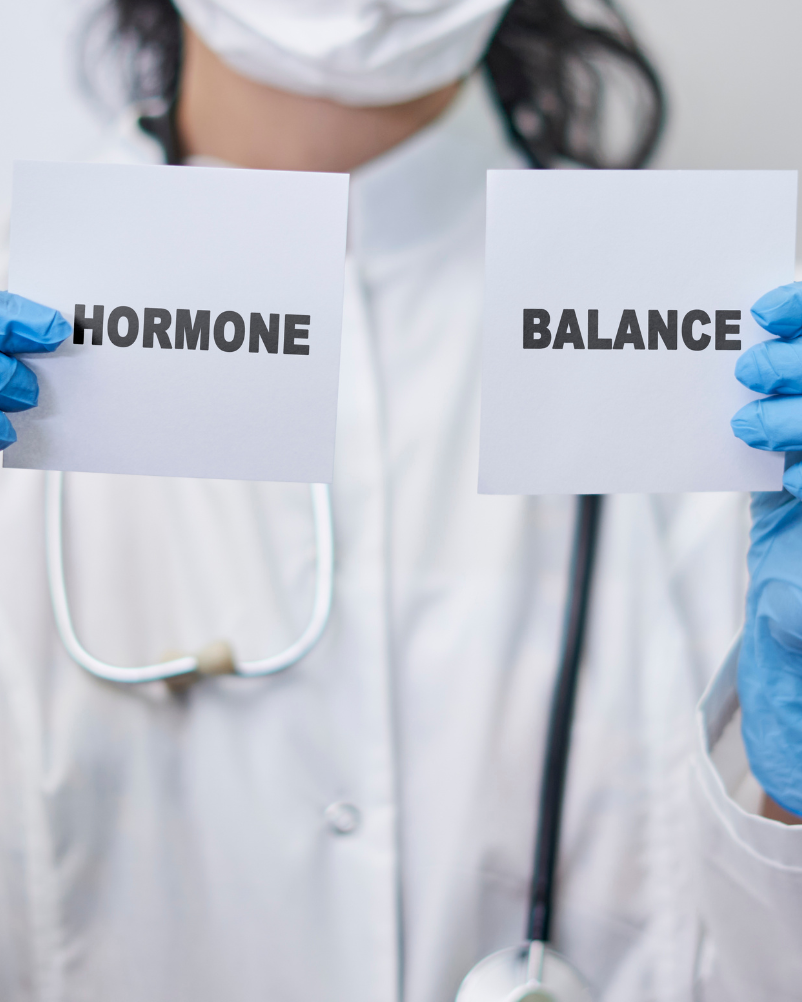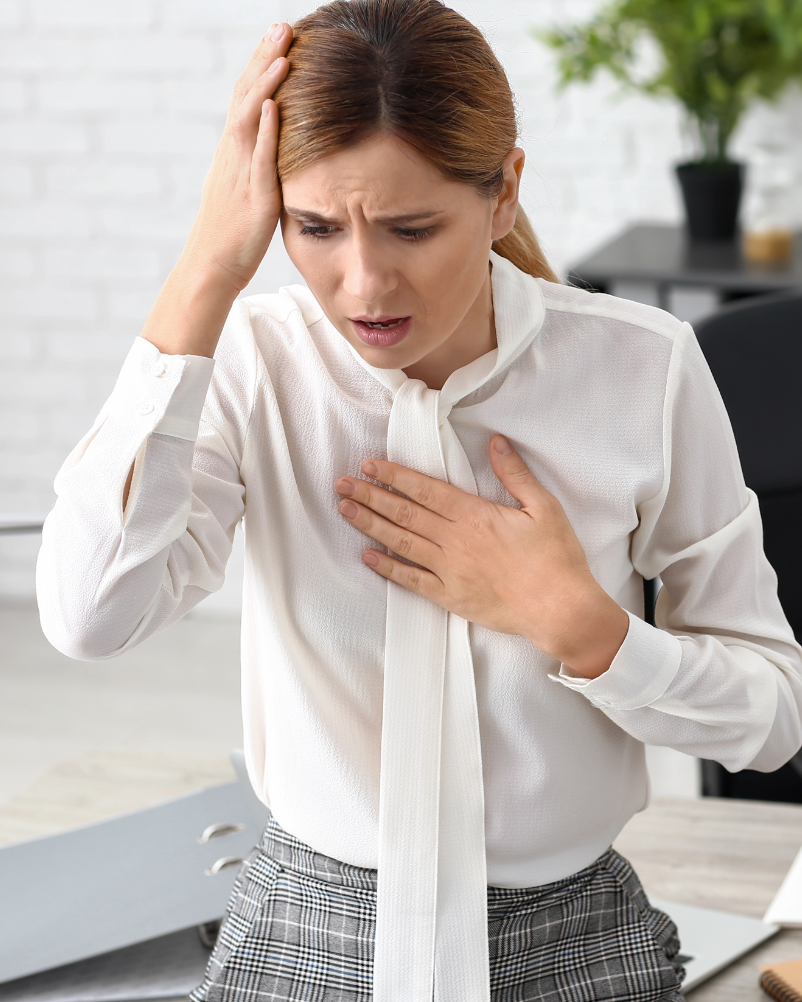
Hormone replacement therapy is a popular way to treat perimenopause symptoms, but it’s not always the right choice. The hormones in HRT can come with serious side effects including blood clots, strokes, and breast cancer. As a result, many women choose to avoid HRT altogether because of its risks. However, suppose you have tried BCPs before and were unhappy with them (or could be curious about other options). In that case, this article will explore how these pills work and some alternative treatments for hot flashes and mood swings during perimenopause transition.
Perimenopause is the phase before menopause when a woman’s body produces less estrogen and progesterone, the two hormones that contribute to regular menstruation.
The good news is that the symptoms of menopause can be reduced or eliminated by taking hormone replacement therapy (HRT). The bad news is that HRT is not without risks and side effects. As a result, many women may try perimenopause pills instead of HRT, since they don’t carry the same risks as traditional hormone replacement therapy.
The most common method for controlling perimenopause symptoms involves using low-dose birth control pills in combination with other herbs and supplements like black cohosh and soy products. These pills have been shown to reduce hot flashes, night sweats, mood swings and other discomforts associated with this stage of life. However, many doctors recommend this treatment only after they’ve tried other natural remedies like exercise or changing your diet without success—and even then there are some concerns about whether it works well enough for everyone who tries it!
Decrease in fertility is one of the first symptoms of perimenopause; these symptoms typically begin around the age of 47.
Hot flashes, insomnia, mood swings and vaginal dryness are all symptoms of perimenopause; when a woman’s menstrual periods become irregular or stop altogether. The decreased fertility is one of the first signs that you may be experiencing early menopause symptoms.
Menstrual cycles become irregular or stop altogether around the age of 47. Ovulation stops at this point, and many women do not get pregnant after this occurs because their eggs are no longer viable for fertilization due to aging and deterioration in quality over time.
When you consider that an average woman ovulates about 400 times during her reproductive lifespan—and each cycle lasts about 28 days—you can see how much bodily change takes place in a lifetime!
If these changes sound difficult for you to deal with now imagine how hard it will be when hormones start fluctuating wildly over time due to hormonal imbalances caused by aging itself! That’s why managing your body correctly through diet/nutrition interventions while still taking care not overwork yourself physically is key here, so check out some information regarding weight gain prevention techniques as well!
Perimenopause lasts about 6 to 10 years, but it can be even longer for some women.
Perimenopause lasts about 6 to 10 years. That’s the typical duration, but it can be even longer than that for some women. The good news is that once you hit menopause, your body will stop producing eggs and ovulate as often as it did in your 20s.
The bad news is that menopause is not a cure for perimenopause symptoms like mood swings and hot flashes (more on those later). Your reproductive hormones will still fluctuate during menopause—just in much smaller doses than before. These hormonal changes may lead to other symptoms like vaginal dryness or sleep problems—which we’ll discuss below!
During this transitional period in a woman’s life, several symptoms arise.
- Hot flashes
- Mood swings
- Irregular menstrual periods
- Difficulty sleeping (insomnia)
- Vaginal dryness, including painful sex and a loss of libido in some women
- Weight gain and/or trouble losing weight, especially around your midsection
If you’re experiencing any of these symptoms during perimenopause, talk to your doctor about how to manage them. Birth control pills may be an option for managing your symptoms if you’re not trying to conceive. However, some serious risks associated with taking birth control pills during perimenopause make it risky for many women—especially those who want to start a family soon after menopause begins.
The most reported symptoms of perimenopause are hot flashes, mood swings, irregular menstrual periods, difficulty sleeping, vaginal dryness, decreased libido, painful sex, weight gain and hair loss.
The most reported symptoms of perimenopause are hot flashes, mood swings, irregular menstrual periods and difficulty sleeping. Some women also experience vaginal dryness, decreased libido, painful sex and weight gain. Hair loss is also common during this time. As you can see from these examples, perimenopause can make for a rough ride!
While these symptoms may seem unbearable (and often are), there are many ways to treat them.
While these symptoms may seem unbearable (and often are), there are many ways to treat them. Talk to your doctor about the various options available to you and consider a natural approach first. While it’s important to weigh all of the risks and benefits when deciding whether or not to take birth control pills, keep in mind that quitting them altogether can also cause some health issues.
Remember that quitting BCPs altogether can also cause some health issues, so if you choose this route, make sure you talk with your gynecologist before doing so.
According to Functional Medicine, three different types of birth control pills (BCPs) effectively boost estrogen in women experiencing perimenopause.
The most popular hormonal method is the combination pill, which contains a mix of synthetic estrogen and progestin. Combination pills are available in 28-day packs with 21 active pills and 7 inactive pills for menstruation. Some brands have 24 active days, with periods lasting six days instead of seven.
A second type of BCP is the minipill, which releases a very low dose of progestin only once per day (every 24 hours). Minipills may be taken continuously or they can be taken in three-month cycles with breaks in between. This type is appropriate if you don’t want to take hormones all year long but still want protection against pregnancy in certain months of your cycle (such as when you know that you’re ovulating).
Finally, an intrauterine device (IUD) such as Mirena or Skyla provides contraception by releasing small amounts of levonorgestrel into your uterus each month. The effect causes thickening inside the cervical canal so sperm cannot reach eggs inside the ovaries. IUDs are effective for up to 10 years after insertion; however, there is a risk that any hormone-based birth control method could cause side effects, especially if not discontinued after 5 years.*
These BCPs are ethinyl estradiol (EE) and norgestimate, EE and drospirenone, and EE and levonorgestrel.
In addition to the main ingredients, a combination contraceptive pill contains one or more “inactive” substances (preferably with no side effects). These are concerned with dissolving the tablet, making it easier for you to swallow.
The inactive ingredients in two common BCPs are:
- EE (ethinyl estradiol)
- norgestimate/EE — levonorgestrel/EE — drospirenone/EE
In both cases, ethinyl estradiol is the synthetic form of estrogen found in birth control pills. Norgestimate is a progestin that mimics testosterone, while levonorgestrel and drospirenone are progestins that mimic naturally occurring sex hormones called progesterone and sprirosterone respectively.
Ethinyl estradiol treats bothersome menstrual problems like heavy bleeding or pain. In addition, it helps increase estrogen in women experiencing low levels of menopause or irregular ovulation.
Ethinyl estradiol is a synthetic estrogen used to treat bothersome menstrual problems like heavy bleeding or pain and helps increase estrogen in women experiencing low levels.
Ethinyl estradiol is also prescribed for:
- Abnormal uterine bleeding
- Atrophic vaginitis (thinning and inflammation of vaginal walls) caused by a lack of estrogen after menopause
- Breast cancer prevention; ethinyl estradiol decreases the risk for breast cancer
Conclusion
We hope you’ve enjoyed learning about birth control pills’ benefits for perimenopause symptoms. Remember that every woman is different, and finding the best option for your body might take trial and error.
Over the years, the medical field still has different views on HRT. The North American Menopause Society (NAMS) says that there’s still much to learn about HRT, and more studies must be done.
I would love to hear your thoughts, so feel free to add your comments below ?
Let’s support each other. Use the share buttons in this article so more women can get help and feel great!
I am Mary, the founder of The Menopause Sisterhood. I have supported midlife women by sharing hard-earned learnings from her experience. To advance my knowledge, I have put a lot of time and effort into understanding the spectrum of women’s health. I am constantly researching the physical, mental and emotional aspects of menopause. I believe in the life-changing power of healthy, holistic living — this is where I anchor the message to all women. Learn more about my mission on the page, About Mary Santander.


